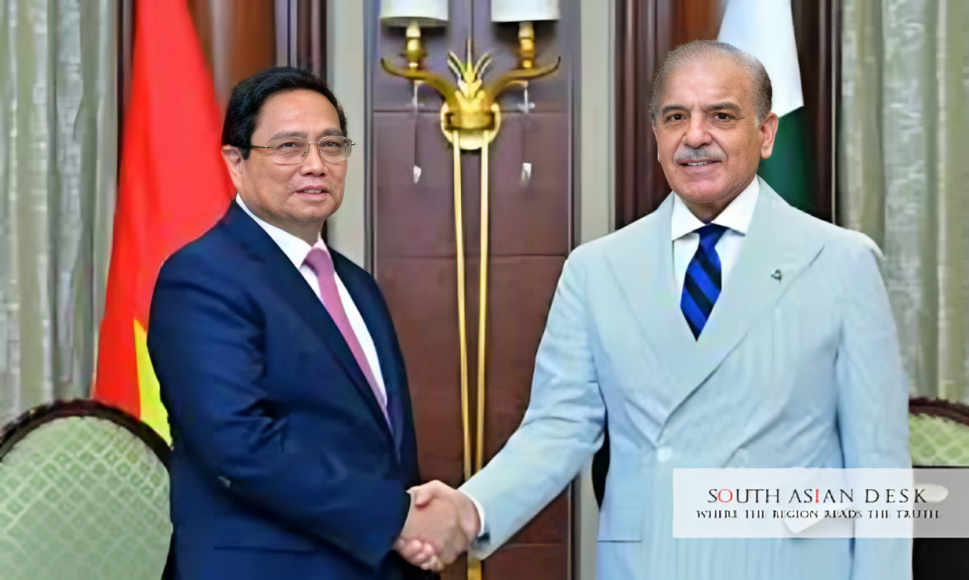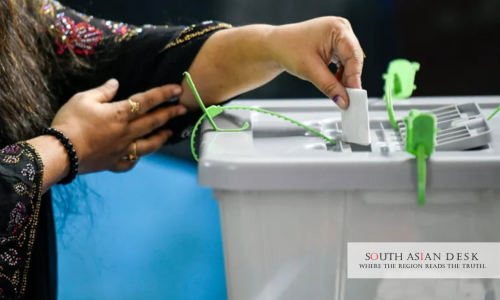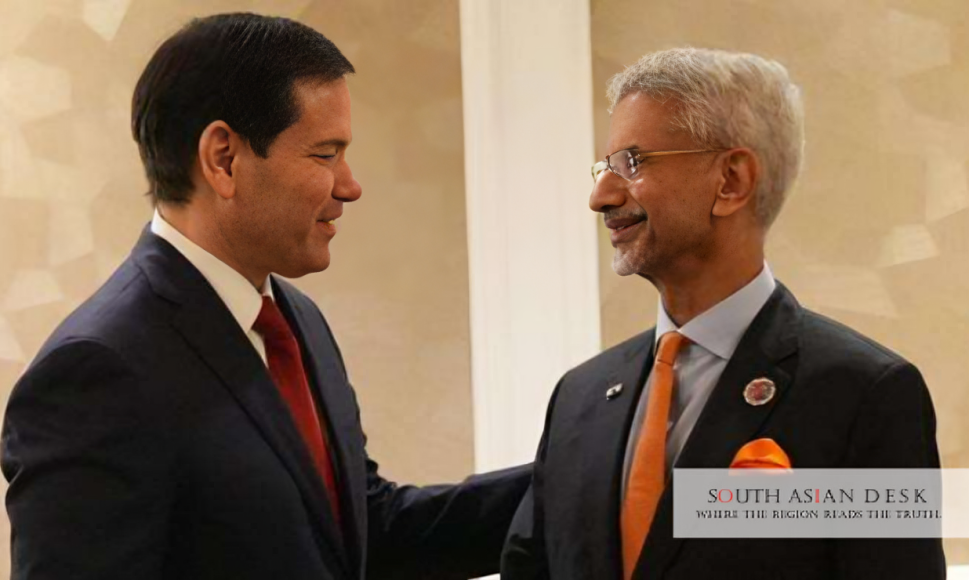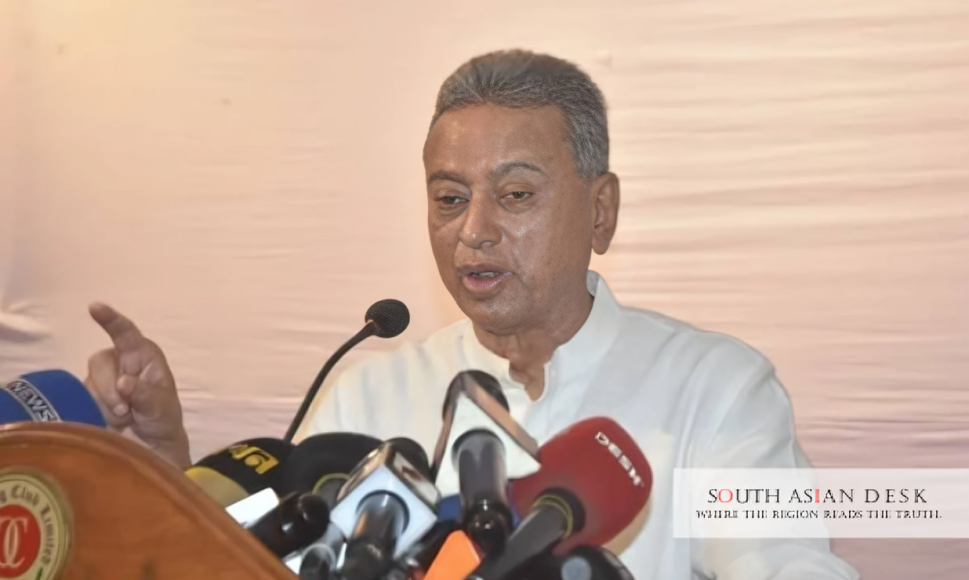Islamabad: Pakistan Vietnam trade pact talks commenced on October 14, 2025, with the signing of a joint declaration by Commerce Minister Jam Kamal Khan and Vietnam’s Minister of Industry and Trade Nguyen Hong Dien, aiming to finalise a preferential trade agreement by the end of 2025 to enhance market access and economic cooperation.
This initiative matters in South Asia as it bridges the region with Southeast Asia, potentially spurring broader trade networks and investment flows that could benefit neighbouring economies through improved connectivity and diversified supply chains.
Details of the Pakistan Vietnam Preferential Trade Agreement
The forum in Islamabad gathered over 100 enterprises from both nations. Attendees included Vietnam’s Ambassador to Pakistan Pham Anh Tuan and Pakistani ministers such as Rana Tanveer Hussain for National Food Security, Abdul Aleem Khan for Transport, Khalid Magsi for Science and Technology, Junaid Anwar Chaudhry for Maritime Affairs, and Deputy Minister of Commerce Jawad Paul.
The joint declaration marks a step towards the Pakistan Vietnam preferential trade agreement. Technical units from both sides will begin discussions immediately. The agreement targets tariff reductions and removal of non-tariff barriers.
Minister Nguyen Hong Dien stated that the two countries share complementary strengths, forming a foundation for stronger ties. He noted Vietnam as the third-largest economy in ASEAN and 32nd globally, attracting foreign direct investment, while Pakistan offers resources in textiles, leather, pharmaceuticals, and Halal food.
Current Trade Landscape and Growth Potential
Bilateral trade stands below USD 1 billion annually. In 2024, the volume reached about USD 850 million. Projections indicate it could exceed USD 1 billion in 2025, with the Pakistan Vietnam preferential trade agreement potentially increasing it five to ten times.
Pakistan exports to Vietnam include cotton, yarn, seafood, and leather. Vietnam supplies Pakistan with telephones, tea, yarn, and agricultural products. The agreement will focus on textiles, where Pakistan’s cotton can support Vietnam’s garment industry, plus agricultural goods, Halal food, furniture, construction materials, and pharmaceuticals.
Minister Nguyen Hong Dien emphasised cooperation in textiles and footwear, agriculture and Halal food, industrial materials and energy, pharmaceuticals, and digital technology. He reaffirmed Vietnam’s commitment to favourable conditions for Pakistani investors, hoping for reciprocal support.
The Pakistan Vietnam trade pact talks also cover direct flights and visa streamlining to boost business travel and tourism. Both sides agreed to enhance science, technology, and innovation links.
Historical Context and Preparatory Steps
Discussions on a trade agreement date back to 2024. In November 2024 and January 2025, Minister Nguyen Hong Dien proposed launching negotiations for a free trade or comprehensive economic partnership agreement. In December 2024, Vietnam appointed a chief negotiator and proposed terms.
Pakistan favoured starting with a preferential trade agreement before advancing to a full free trade deal. On July 8, 2025, Vietnam sent a draft agreement and product list for tariff cuts. A technical meeting on September 23, 2025, prepared for the October launch.
During Prime Minister Pham Minh Chinh’s 2024 visit to Saudi Arabia, he and Pakistan’s Prime Minister Shehbaz Sharif agreed to aim for over USD 10 billion in trade. This aligns with the current Pakistan Vietnam trade pact talks.
Pakistan expressed solidarity with Vietnam over recent floods, adding a humanitarian dimension to the economic dialogue.
Challenges and Opportunities in Pakistan Vietnam Trade Pact Talks
While trade volumes remain modest, the combined population of nearly 360 million offers a vast market. Vietnam’s strategic position in ASEAN and Pakistan’s in South Asia provide gateways for regional expansion.
Potential challenges include aligning regulatory standards and addressing competitive sectors. However, the Pakistan Vietnam preferential trade agreement will create a legal framework for investments in supply chains, agro-processing, energy, and digital industries.
Enterprises are encouraged to explore synergies. For instance, Pakistan’s Halal food expertise complements Vietnam’s agricultural exports, and joint ventures in pharmaceuticals could tap global demand.
What’s Next
Negotiations will proceed through technical sessions, with both ministries coordinating timelines. The goal is to sign the Pakistan Vietnam preferential trade agreement by December 2025, paving the way for a future free trade agreement.
This could transform bilateral relations, fostering sustainable growth. As Pakistan Vietnam trade pact talks advance, stakeholders anticipate a robust partnership driving economic progress in the region.
Published in SouthAsianDesk, October 15th, 2025
Follow SouthAsianDesk on X, Instagram, and Facebook for insights on business and current affairs from across South Asia.






